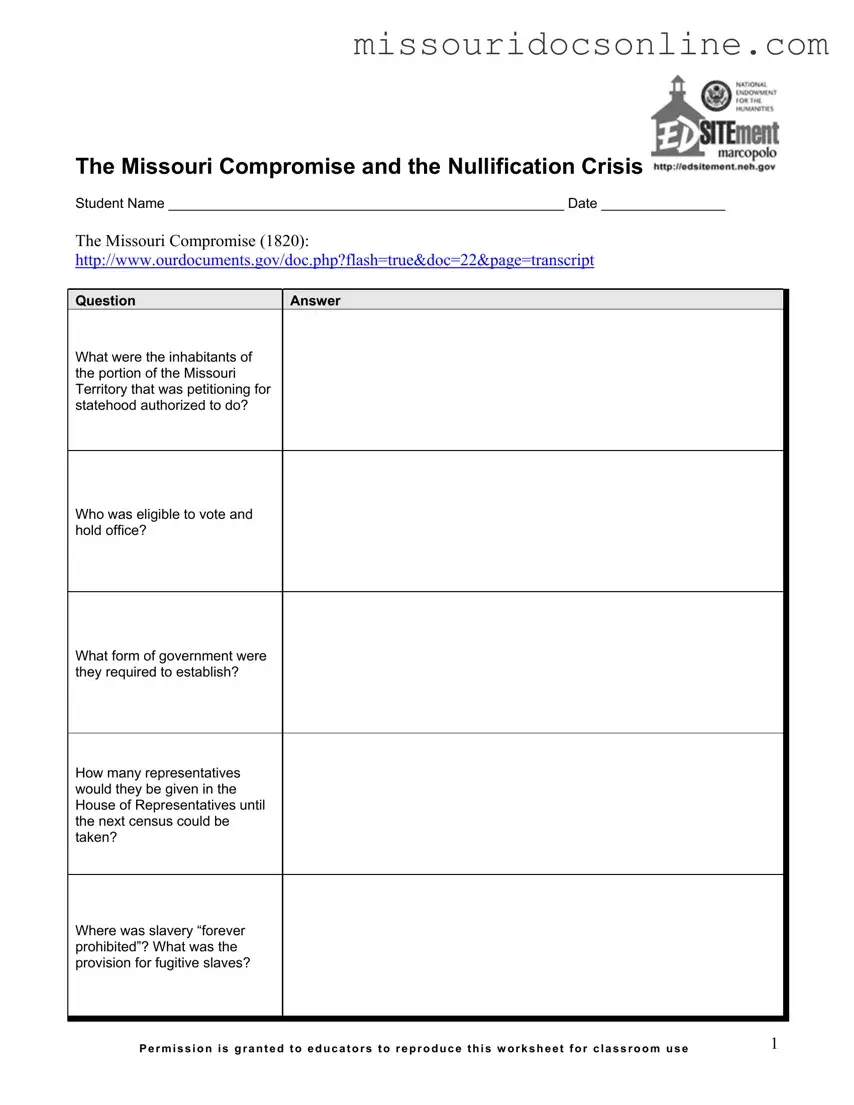Blank Missouri Compromise Form
The Missouri Compromise form is a worksheet designed to help students explore the historical context and implications of the Missouri Compromise of 1820. This form includes questions about statehood, government structure, and the status of slavery in the Missouri Territory. Educators can use it as a valuable resource in the classroom.
To get started, fill out the form by clicking the button below.
Access Missouri Compromise Editor
